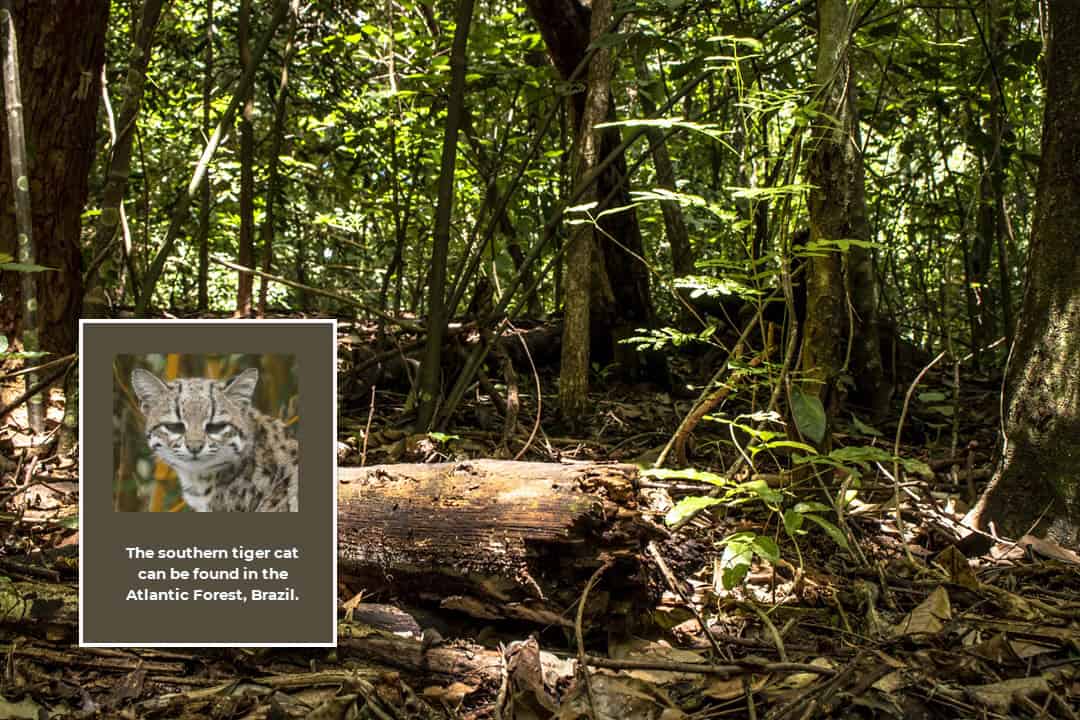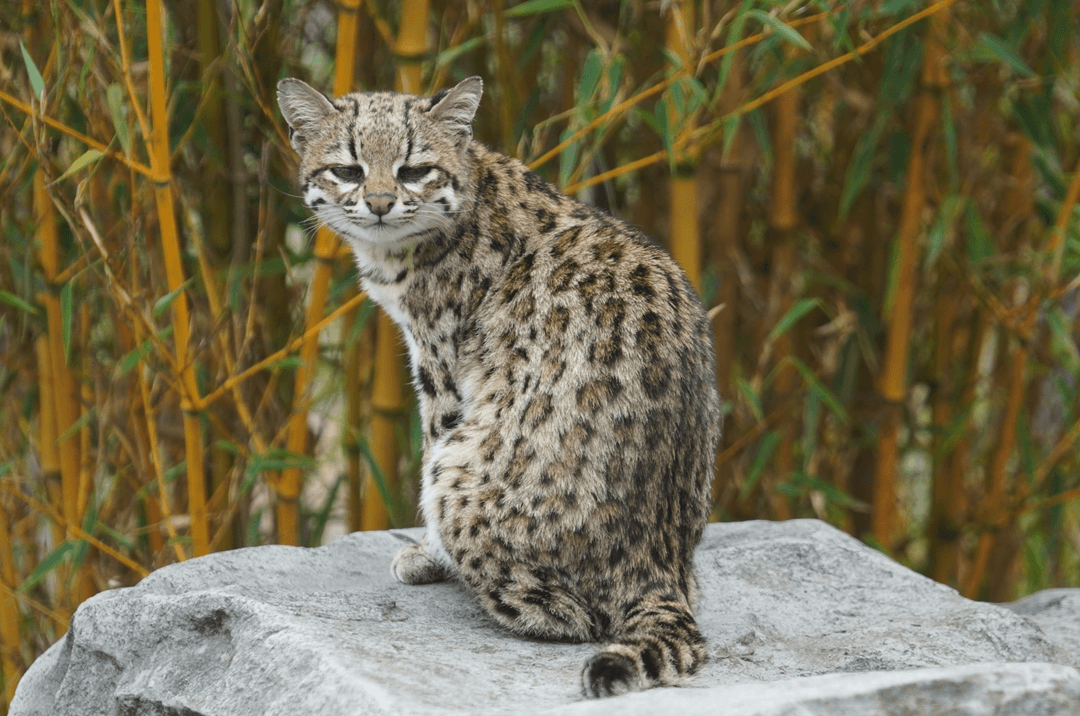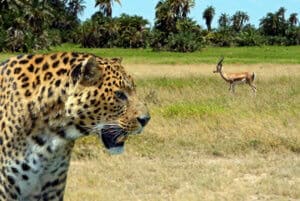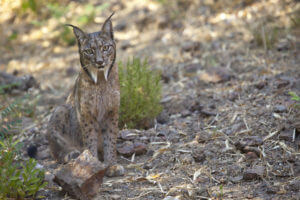The southern tiger cat (Leopardus guttulus) is a small wild cat that was recognized as a species in 2013. It was previously called an oncilla.
Scientific name: Leopardus guttulus
Conservation Status: Vulnerable
Lineage – The southern tiger cat belongs to the Ocelot lineage, which includes the ocelot, margay, pampas cat, Northern tiger cat, Geoffroy’s cat, and kodkod.
Additional species info:
Over the years, tiger cats have had many names. Recently, a research group in Brazil conducted an expanded analysis of tiger cats and noted that there are three distinct groups: Savanna tiger cat (Leopardus tigrinus), Atlantic forest tiger cat (Leopardus guttulus) and the clouded tiger cat (Leoparuds pardinoides).
Southern tiger cat facts
- The southern tiger cat used to be known as oncillas, tigrinas, tiger cats and small-spotted cats.
- It is one of the smallest species in North, Central, and South America.
- In most places, it is considered a rare wild cat.
- They are excellent climbers but most of their time is spent on the ground hunting mice.
More about the southern tiger cat
Physical appearance
The Southern tiger cat is similar in appearance to a Geoffroy’s cat.
It has yellowish to golden-brown fur with black rosettes (rose-shaped black markings). It is generally darker in color than the oncilla northern tiger cat, with bigger rosettes, and weighs between 4 and 5 lbs. It is not uncommon to find Southern tiger cats that are all black.
The Southern tiger cat has a narrow head, a long tail, and large ears. Its backside is black, and a white line is above its eyes. The back of the ears has a white spot.
Location and habitat
The southern tiger cat can be found in central and southern Brazil, in the Atlantic Forest, which runs along the coast of Brazil down to Paraguay and Argentina. The cat is usually seen at elevations below 6,600 feet in various types of forests, savannahs, and some beach areas.
They will also inhabit agricultural fields. It is considered one of its region’s most adaptable wild cat species.
The total population of oncilla southern tiger cats is estimated at around 6,000. The oncilla northern tiger cat and southern tiger cat sometimes inhabit areas near each other but do not mate. They will avoid places where there are ocelots.

Hunting and prey
Oncilla southern tiger cats prey on birds, lizards, and other small mammals. They compete with ocelots for food and habitats.
Mating and reproduction
The southern tiger cat mates and reproduces all year long. Gestation is 75-78 days. Litters are usually 1 kitten, but sometimes as many as 3. They are weaned after two to three months and reach physical maturity at 11 months. Their lifespan in the wild is estimated at 15 to 21 years.
Conservation
Southern tiger cat survival is threatened by habitat loss and deforestation, hunting, road kills, diseases from domestic dogs, and poisons used to kill rodents. It’s range has declined in many areas by as much as 50%. In protected areas there are low densities of Southern tiger cats and fragmented populations.


















0 Comments